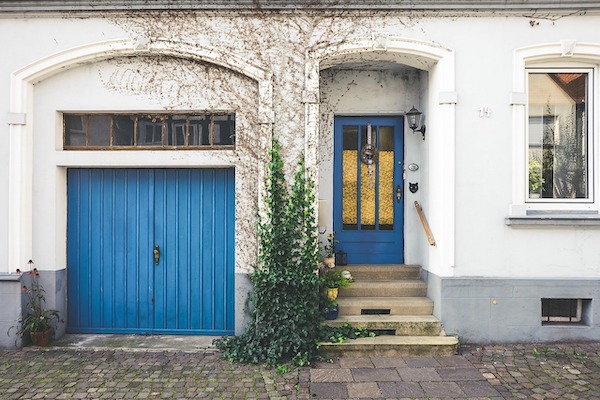Featured in

‘HI THERE!’ THE real estate agent beams. ‘Are you here for the inspection? Come on in!’
I wait. Watch her eyes flick from my electric wheelchair to the steps between us. Watch understanding dawn.
‘Oh. Um, it’s a single-storey house. It’s fully accessible.’
She’s floundering, and I don’t help her. This is the third such incident I’ve experienced this month. I’ve had enough.
I’d called the day before to confirm the accessibility of the property and was assured it would be fine. And, despite my misgivings, I showed up, because taking able-bodied people at their word is the only option I have. For them, it would be fine, because they don’t have to constantly navigate a world not made for them. For me, and for the thousands of disabled people in Australia looking for somewhere to live, it’s beyond exhausting.
There are more than 4.4 million disabled people in Australia. We constitute 18 per cent of the population, and over 90 per cent of us live in private dwellings. Yet only 5 per cent of private houses built here meet national accessibility standards. Accessible housing is a human right, one that disabled people cannot and should not be denied. Often, our alternatives are homelessness or moving away from our friends and communities.
Though not all disabled people require accessible or adapted housing, everyone ages, and our needs adapt as we do. The Australian Human Rights Commission estimates that by 2050 approximately one quarter of people in Australia will be aged over sixty-five. At present, the majority of older people in Australia live independently at home. But they can only do so safely in dwellings that are designed for their shifting mobility and other access needs.
WHAT MAKES A house accessible? This depends on the person, but there are a few standard features that can be easily incorporated into building and design. Showers with step-free access. Bathrooms that include handrails and enough space to accommodate the turning circle of a wheelchair. Sufficient space and electrical outlets for charging medical equipment or mobility aids. Evenly distributed lighting that can provide stronger illumination as needed.
The current options for disabled people – to live in segregated group homes, also known as Supported Independent Living (SIL), or apply for NDIS-funded home modifications – are far from adequate. Don’t get me wrong; we’re lucky to live in a place where SIL and home modifications are an option. But most disabled people don’t require the level of support SIL provides. Additionally, putting aside the fact that demand for such facilities far outweighs the current supply, we shouldn’t have to choose between inaccessible housing or living in a segregated setting.
Though the NDIS can fund home modifications, getting them approved is often a long and exhausting battle for participants. Even if the process was smooth and easy to navigate, as of 30 September 2023, the NDIS had 631,000 participants. That means that less than one quarter of the 4.4 million disabled people in Australia are on the NDIS and able to apply for home modifications. Furthermore, applying for the scheme is a battle many of us lack the energy and resources to fight. The reports and evidence that must accompany NDIS applications are expensive and the clinicians who write them are in high demand, with wait lists stretching to over a year.
When I applied, it took three attempts to be approved, and I only made it due to the support of friends, physio and occupational therapists urging me not to give up after each rejection.
If you don’t live with a disability, it can be easy to think that these barriers aren’t relevant. But all ethical arguments aside, having accessible housing as standard makes economic sense. It would mean much greater choice for renters and buyers, and adding accessibility features is estimated to cost around 1 per cent of a new home build – which would decrease as accessibility features became the norm. In New Zealand, it’s been calculated that the initial average outlay of $2,000 to build to the equivalent of a universal housing design standard has a threefold economic return.
It’s not just the construction industry that would see a reduction in expenditure. If merely 20 per cent of new homes included universal housing design, the Australian health system would save between $37 million and $54.5 million each year.
So how do we get to a place where these economic benefits become reality? We start by making every stage of the process as accessible as possible.
FINDING EXISTING ACCESSIBLE properties is only the first and – arguably – the simplest step in this process. Existing real estate websites are not designed to be accessible. There is no search filter for properties with certain accessibility features, though realestate.com said in 2022 that such a filter is ‘currently under consideration’.
Australian advocacy organisation Summer Foundation created their online housing hub to address these barriers. The hub provides prospective disabled renters and buyers with an option to search specifically for properties that meet their access needs. But again, we shouldn’t be forced to use a separate search engine to find somewhere to live, especially not when there are a proliferation of guides, apps and widgets to support the implementation of accessible web design.
Embedding accessible design in housing construction is next. Amid a cost-of-living crisis, it’s hard to imagine an improvement in the state of accessible housing, but there are some reasons to hope. After prolonged campaigns from disability advocacy organisations, several state governments voted to adopt an opt-in section of the National Construction Code (NCC) from October 2022, with a twelve-month transition period. That means that from October 2023, all newly built homes in these jurisdictions have been required to include mandatory features, such as step-free entry and step-free showers. However, New South Wales, Western Australia and South Australia chose to opt out.
The recent NDIS review and Disability Royal Commission (DRC) also offer the possibility of forward momentum. The review recommended ‘a targeted action plan for housing under Australia’s Disability Strategy’. The DRC made four recommendations around housing, notably that governments should ‘increase the availability and supply of accessible and adaptive housing for people with disability through the National Construction Code’, and ‘increase tenancy and occupancy protections for people with disability’. Whether or not these recommendations will be successfully implemented remains to be seen. If they are – led by disabled people the whole way – they could transform the state of housing in Australia.
All these alternatives – the NCC amendments, the NDIS review recommendations and the DRC recommendations – exist only because disabled people fought long and hard for them. If any positive change eventuates from them – and, frankly, it’s a big ‘if’ – it will take years, if not decades.
I’m one of the lucky ones: I can live with family if I need to. They own their house, which has adequate covered space to store my wheelchair. They could build a ramp at the entrance and install handrails in the bathroom. Many disabled people don’t have that safety net.
AS I WRITE this, I’m still navigating the labyrinth of inaccessible housing. I planned to move into a new house later this year, but my disability got in the way. I’m grieving the loss of the future I envisioned and simultaneously trying to create a different one. I’m currently living in a third-floor apartment, which is mostly accessible. I can’t open the front door on my own and I live in perpetual fear that the evacuation alarm will sound and I’ll have to try to descend the stairs. But the doorway is – just – wide enough for my wheelchair, the shower is step-free and the taps have levers I can pull instead of knobs I’d struggle to turn.
I have many hopes for the future of renting and property ownership for disabled people. I hope that, at a minimum, all states will adopt the amendments to the NCC, thereby increasing the availability of accessible housing. I hope that the process for obtaining home modifications through the NDIS – for renters and homeowners – becomes much easier. And, ultimately, I hope that one day disabled people will have the same access to housing that meets our needs as everyone else has. For us, home cannot be where the heart is. Home is where accessibility is. But why can’t it be both?
Share article
About the author

Laura Pettenuzzo
Laura Pettenuzzo is a writer and disability advocate living on Wurundjeri country. Her work has appeared in The Age, The Guardian, SBS Voices, Mascara...